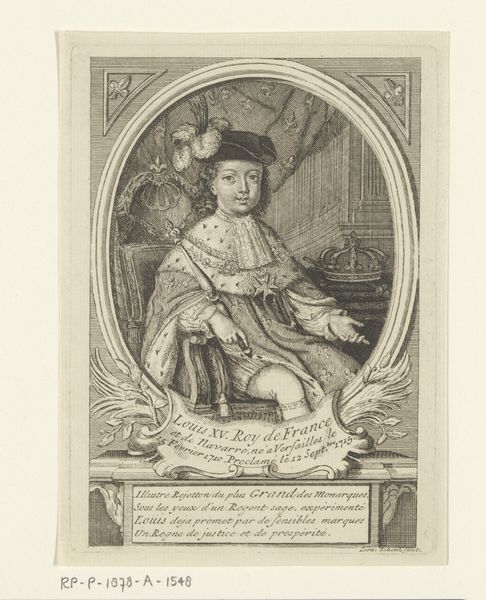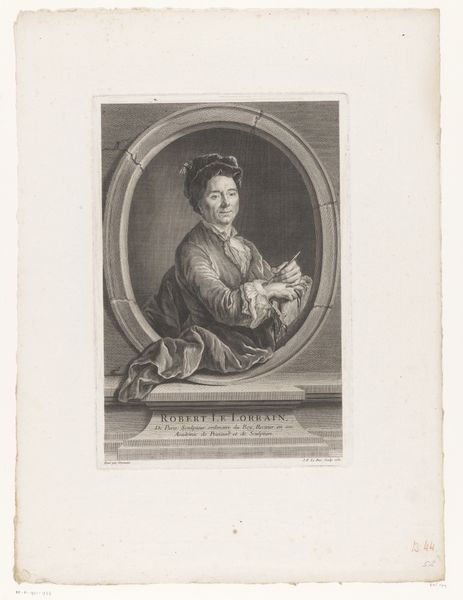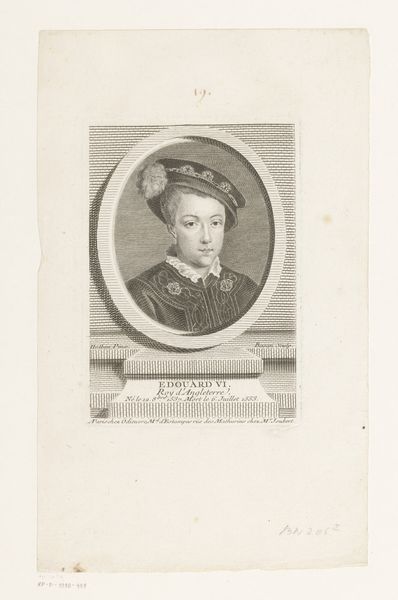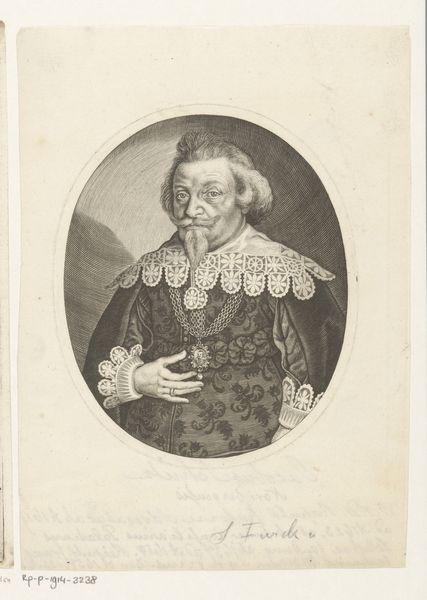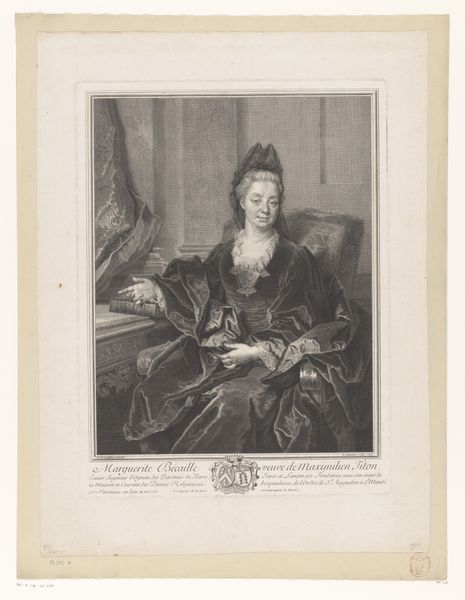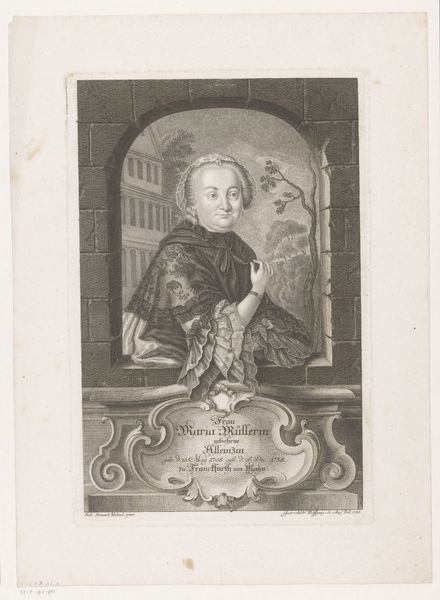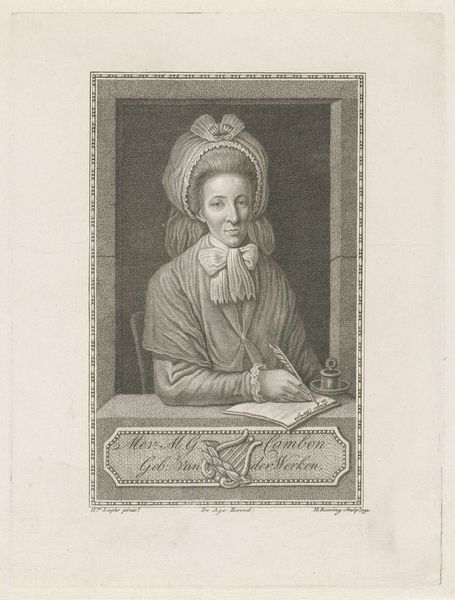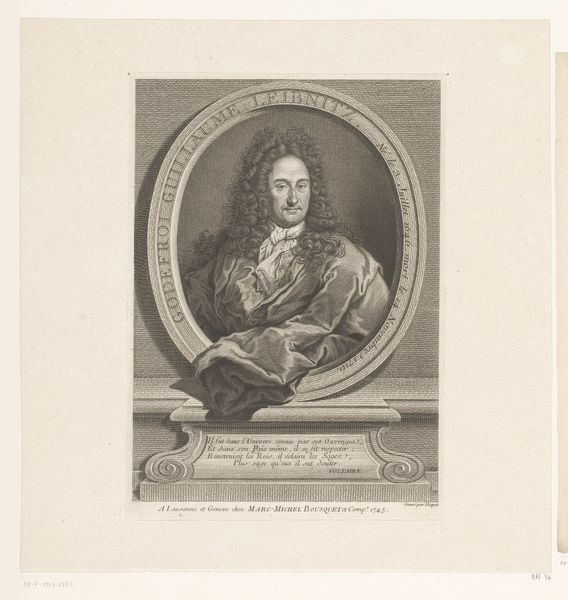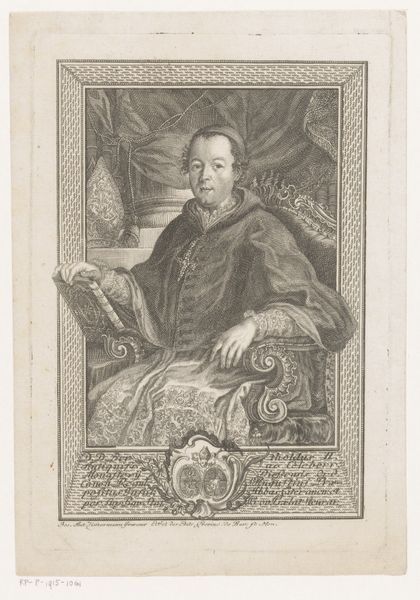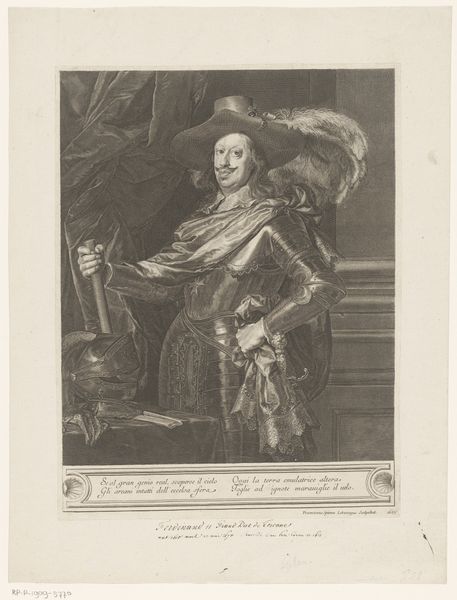
drawing, engraving
#
portrait
#
drawing
#
baroque
#
engraving
Dimensions: height 464 mm, width 359 mm
Copyright: Rijks Museum: Open Domain
Editor: This is Jean Daullé’s 1737 engraving, “Portrait of Claude Gendron,” currently at the Rijksmuseum. It has a rather architectural feel, almost as if the subject is emerging from a building. How do you see this piece in terms of its visual construction? Curator: Indeed, the architectural framework is crucial. Note how the lines of the niche intersect with Gendron's figure, creating a dynamic interplay of planes. The composition utilizes strong verticals and horizontals, which lend stability and formality, yet these are softened by the baroque curves of the niche's arch and the draping of Gendron's robe. What effect do these contrasts achieve? Editor: I suppose it keeps it from feeling too rigid or static. There's a sense of movement. The fabric looks so soft! How was that captured in an engraving? Curator: Consider the technical skill evident in the varying densities of line. Daullé masterfully manipulates the engraved lines to create tonal gradations, giving the illusion of volume and texture. The areas of deep shadow contrast sharply with the highlights, achieving a striking chiaroscuro effect that defines the form. Notice especially how light shapes the velvet robe. What purpose does it serve here, and does that affect our reading of Gendron himself? Editor: The lighting definitely adds drama, and that makes him look very important! I didn't notice how strategically placed the shading was. Curator: Exactly. Every element—line, light, form—contributes to the overall construction and the creation of meaning within the piece. Analyzing these components independently allows us to appreciate their symbiotic relationship in the broader artistic statement. Editor: That’s a fascinating breakdown; I learned so much. Thanks! Curator: My pleasure. Reflecting on form and structure always provides new perspectives!
Comments
No comments
Be the first to comment and join the conversation on the ultimate creative platform.

